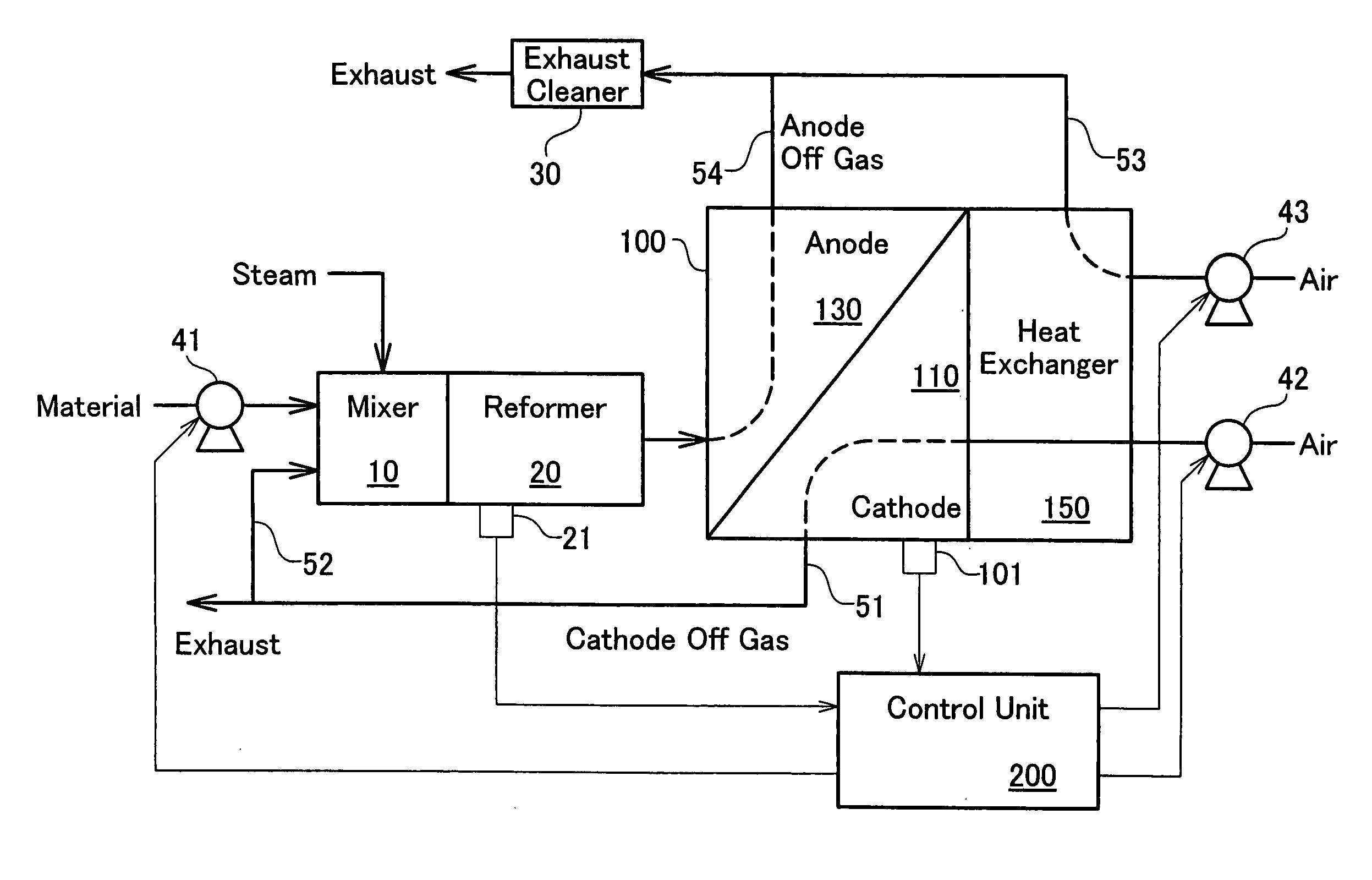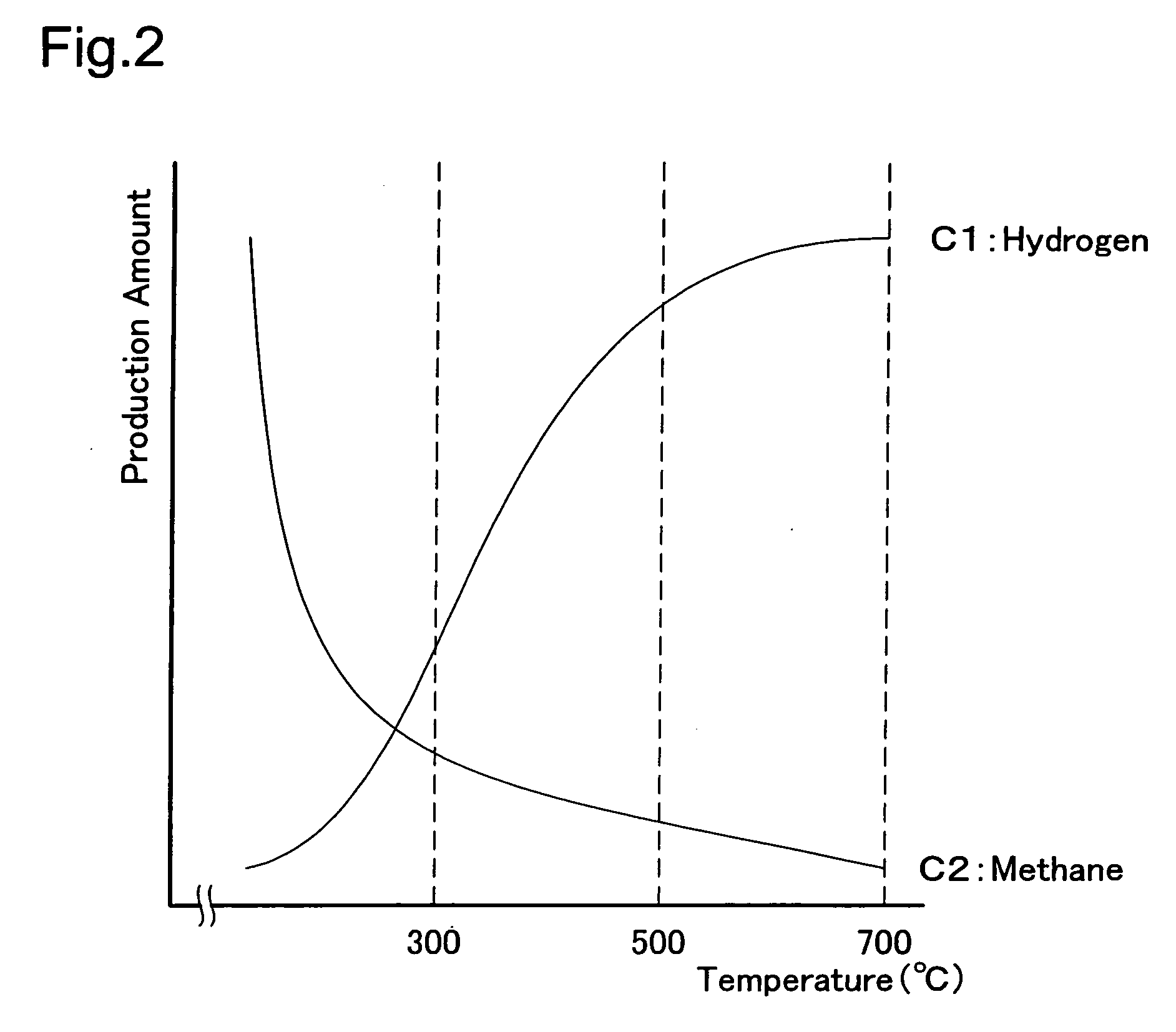Fuel battery system
a fuel cell and battery technology, applied in the field of fuel cell systems, can solve the problems of low power generation efficiency, and achieve the effect of improving power generation efficiency and preventing a temperature gradient in fuel cells
- Summary
- Abstract
- Description
- Claims
- Application Information
AI Technical Summary
Benefits of technology
Problems solved by technology
Method used
Image
Examples
first embodiment
A. First Embodiment
A1. System Configuration
[0028]FIG. 1 schematically illustrates the configuration of a fuel cell system in a first embodiment. The fuel cell system of the first embodiment includes fuel cells 100 that generate electric power by an electrochemical reaction of hydrogen included in a supply of a fuel gas to anodes 130 with oxygen included in a supply of the air to cathodes 110. The fuel cells 100 have solid electrolyte membranes and are operated at a temperature of about 500° C. as described later in detail.
[0029] The intake air by a pump 42 flows through a heat exchanger 150 to cool the fuel cells 100 down and is then supplied to the cathodes 110. An exhaust gas from the cathodes 110 after the reaction (hereafter referred to as cathode off gas) is discharged through an exhaust conduit 51. Part of the cathode off gas is introduced via a branched pipe 52 into a mixer 10 to be used for a reforming reaction for generation of hydrogen, as described later.
[0030] The fu...
second embodiment
B. Second Embodiment
[0058]FIG. 6 schematically illustrates the configuration of another fuel cell system in a second embodiment. The fuel cell system of the second embodiment has a different structure related to production of the fuel gas, while including the fuel cells 100 of the same unit cell structure as that of the first embodiment.
[0059] In the system of the second embodiment, a combustor 25A is arranged besides a reformer 20A and receives a supply of the anode off gas through an exhaust conduit 54A and a supply of the air through air conduits 53A and 53B. The combustor 25A burns off the remaining hydrogen in the anode off gas to heat up the reformer 20A.
[0060] Like the first embodiment, the partial oxidation reaction proceeds in parallel with the steam reforming reaction in the reformer 20A. In the structure of the second embodiment, since the combustor 25A supplies some heat, the rate of the steam reforming reaction to the partial oxidation reaction is raised to be endothe...
PUM
| Property | Measurement | Unit |
|---|---|---|
| temperature | aaaaa | aaaaa |
| temperature | aaaaa | aaaaa |
| thickness | aaaaa | aaaaa |
Abstract
Description
Claims
Application Information
 Login to View More
Login to View More - R&D
- Intellectual Property
- Life Sciences
- Materials
- Tech Scout
- Unparalleled Data Quality
- Higher Quality Content
- 60% Fewer Hallucinations
Browse by: Latest US Patents, China's latest patents, Technical Efficacy Thesaurus, Application Domain, Technology Topic, Popular Technical Reports.
© 2025 PatSnap. All rights reserved.Legal|Privacy policy|Modern Slavery Act Transparency Statement|Sitemap|About US| Contact US: help@patsnap.com



